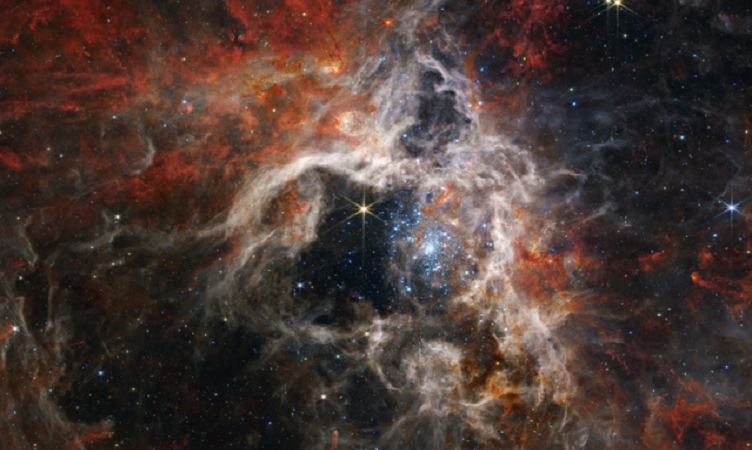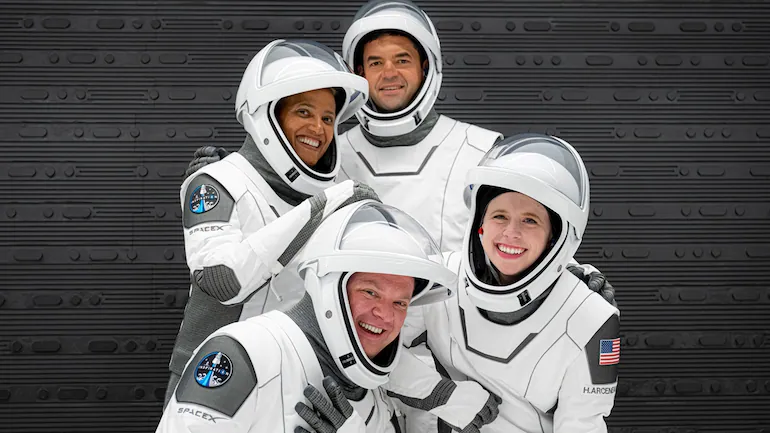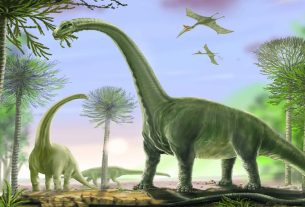The various operational telescopes still offered us incredible views of the universe. The arrival of the James Webb Telescope was also felt with shots of some already known objects in incredibly higher resolutions. Here are some of the images that caught our attention in 2022.
Cosmic Hourglass

Several weeks ago, the James Webb Telescope (JWT) gave us a spectacular view of the hourglass-shaped cloud surrounding protostar L1527. The image shown below shows how material is ejected from the nascent object, creating cavities above and below.
The South Ring Nebula

There is in this nebula much more than it seems. Photographed for years, this iconic object recently passed under the lens of the James Webb Telescope. This new data revealed several unexpected surprises.
The Pillars of Creation

Photo of Hubble (left) and the James Webb Telescope (right) from the Pillars of Creation. As you can see, the JWT image reveals never-before-seen details about this iconic object in the night sky.
The central black hole of the Milky Way

In 2019, researchers from the Event Horizon Telescope Collaboration revealed a historic photo to us: that of a 6.5 billion solar mass black hole located 53 million light years away. This year, these same researchers shared with us the very first image of the supermassive black hole in our own galaxy: an ogre four million times more massive than the Sun located about 26,000 light-years from Earth.
Two very old galaxies

Two galaxies spotted in the deeper JWT images have pinpointed two incredibly old galaxies that formed only 430 and 350 million years respectively after the Big Bang.
New look at Europe

Close-up of the icy crust of Jupiter’s moon Europa, as photographed by the Juno spacecraft during its recent flyby. Beneath this layer of ice several kilometers thick hides a global ocean containing twice as much water as all the oceans on Earth combined.
Neptune and its rings

This new image from the James Webb Telescope shows us the clearest view of Neptune’s rings in decades. Being thirty times farther from the Sun than Earth, it hasn’t been particularly easy to consistently take clear images of the planet. In this image, seven of Neptune’s fourteen moons are also visible. The largest of these, Triton, is the luminous point at the top left.
Stephan’s Quintet

Stephan’s Quintet photographed by the James Webb Telescope. It is a grouping of five galaxies, four of which are interacting. They are located in the constellation Pegasus, about 290 million light-years away.
The Tarantula Nebula

Located about 161,000 light-years from Earth in the Large Magellanic Cloud galaxy, the Tarantula Nebula was recently photographed by the JWT. Thousands of young stars that once went unnoticed are now visible.
The Deep Field of the JWT

A few weeks ago, NASA shared with us the deepest infrared image of the universe to date. It was taken by the James Webb Telescope. This is galaxy cluster SMACS 0723 as it appeared 4.6 billion years ago. The combined mass of this cluster, which is nestled in part of the sky in the constellation of the Flying Fish, acts here as a gravitational lens, distorting and magnifying galaxies much further away behind it, some evolving just 600 million years later. the Big Bang.
The Carina Nebula

New chart from the James Webb Telescope. This landscape of “mountains” and “valleys” dotted with twinkling stars is actually the edge of a young star-forming region located in the Carina Nebula, 7,500 light-years from Earth. This image reveals previously invisible star birth zones for the first time.
The oldest known star

Astronomers recently used the power of the James Webb Telescope (JWT) to observe Earendel, the most distant individual star known to date. Unearthed by Hubble in March 2022, the object can be seen as it was 12.9 billion years ago.

Email: ben@satprwire.com Phone: +44 20 4732 1985
Ben has been listening to the technology news for quite some time that he needs just a single read to get an idea surrounding the topic. Ben is our go-to choice for in-depth reviews as well as the normal articles we cover on a normal basis.



